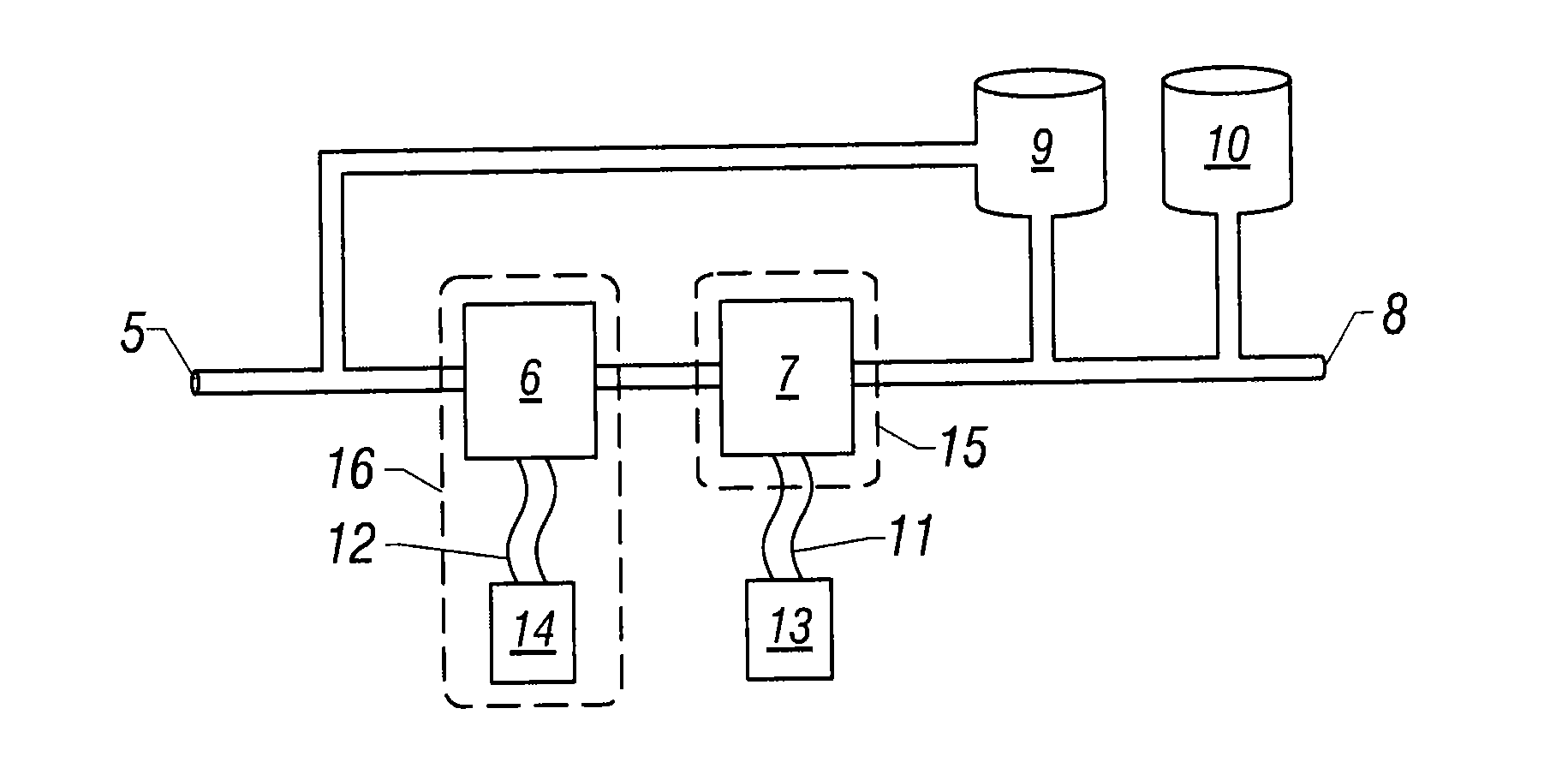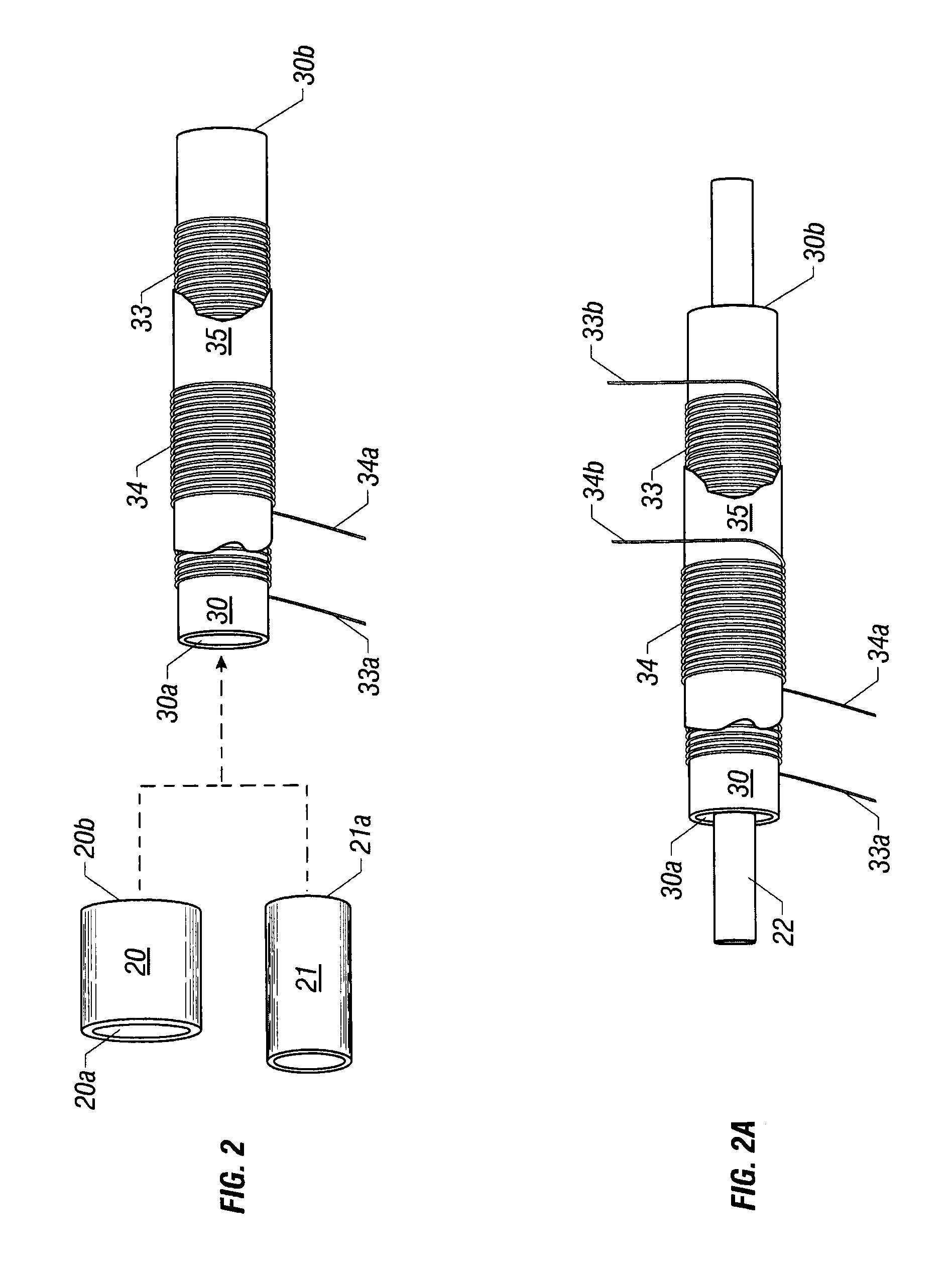Method and apparatus for preventing scale deposits and removing contaminants from fluid columns
a technology of fluid column and scale, applied in the direction of quarries, separation processes, treatment water, etc., can solve the problems of affecting the operation of equipment, affecting the efficiency and labor of fouled systems, and affecting the efficiency of fluid treatment, so as to improve the efficiency of apparatus, improve the effect of fluid treatment, and reduce the effect of contaminant concentration
- Summary
- Abstract
- Description
- Claims
- Application Information
AI Technical Summary
Benefits of technology
Problems solved by technology
Method used
Image
Examples
first embodiment
[0042]FIG. 2 shows the magnetically conductive conduit 10 comprising a length of magnetically conductive material defining a fluid impervious boundary wall with an inner surface and an outer surface and having port 10a at the proximal end of the conduit and port 10b at the distal end of the conduit. A single length of electrical conducting material is shown forming first coil layer 33 and second layer 34 encircling the outer surface of the magnetically conductive conduit with non-magnetic stabilizer 35 shown disposed between the coil layers. Conductor leads 33a and 34a may be connected to at least one supply of electrical power to energize the coiled electrical conductor and establish a magnetic field having lines of flux directed along the flow path of the fluid and concentrated in a plurality of distinct areas along the longitudinal axis of the magnetically energized conduit.
[0043]Introducing a feed stream to port 30a directs fluid to pass through a first area of magnetic treatmen...
second embodiment
[0045]Non-magnetically conductive conduit 21 is a non-magnetically conductive fluid flow conduit to promote a flow of fluid through the magnetically energized conduit, said fluid flow conduit comprising a non-magnetically conductive material defining a fluid impervious boundary wall with an inner surface and an outer surface and having port 21a adapted to provide for the fluid impervious connection of said fluid flow conduit with port 30a of magnetically energized conduit 30, whereby said connection establishes a non-magnetically conductive region providing for a concentration of magnetic energy at port 30a of the magnetically energized conduit. An additional segment of non-magnetically conductive fluid flow conduit may similarly be adapted to provide a fluid impervious connection with port 30b of the magnetically energized conduit.
[0046]FIG. 2A shows a first length of electrical conducting material forming coil layer 33 and a second length of electrical conducting material forming ...
third embodiment
[0048]Fluid flow conduit 22 is a non-magnetically conductive fluid flow conduit to promote a flow of fluid through the magnetically conductive conduit, said fluid flow conduit defining a section of conduit within a piping system comprising a non-magnetically conductive material sleeved within port 30a at the proximal end of the magnetically energized conduit, the boundary wall of magnetically conductive conduit 30 and port 30b at the distal end of the magnetically energized conduit, said fluid flow conduit comprising a length of non-magnetically conductive material defining a fluid impervious boundary wall with an inner surface and an outer surface and having inlet and outlet ports.
[0049]Introducing a feed stream to the inlet port of fluid flow conduit 22 directs fluid to pass through a first area of magnetic treatment concentrated at port 30a at the proximal end of magnetically energized conduit 30, through a second area of magnetic treatment concentrated along a path extending thr...
PUM
 Login to View More
Login to View More Abstract
Description
Claims
Application Information
 Login to View More
Login to View More - R&D
- Intellectual Property
- Life Sciences
- Materials
- Tech Scout
- Unparalleled Data Quality
- Higher Quality Content
- 60% Fewer Hallucinations
Browse by: Latest US Patents, China's latest patents, Technical Efficacy Thesaurus, Application Domain, Technology Topic, Popular Technical Reports.
© 2025 PatSnap. All rights reserved.Legal|Privacy policy|Modern Slavery Act Transparency Statement|Sitemap|About US| Contact US: help@patsnap.com



